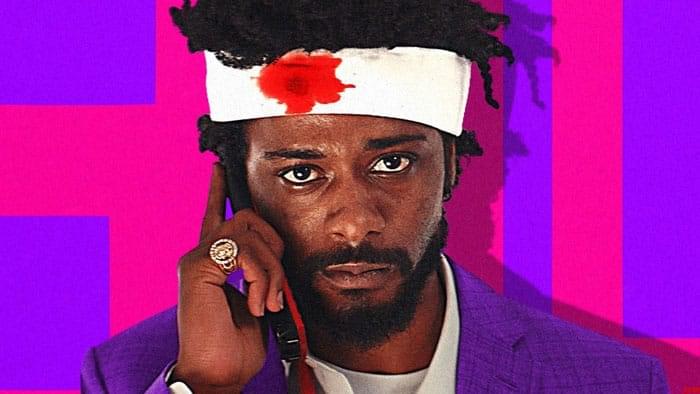
BOOTLEG FILES 350: “M” (1951 feature directed by Joseph Losey).
LAST SEEN: We cannot confirm the last public exhibition of this film.
AMERICAN HOME VIDEO: None.
REASON FOR BOOTLEG STATUS: It has not been available for commercial release in home entertainment channels.
CHANCES OF SEEING A COMMERCIAL DVD RELEASE: Someday, perhaps.
Before we get started, I need to offer a word of gratitude to a great many people. This column marks the 350th entry in The Bootleg Files series, and I would like to take this moment to thank the Film Threat family for its long-running support of this weekly endeavor. And, now, on with the show…
John Waters once wondered why filmmakers are eager to remake great films. In Waters’ mind, the films that are crying out for remakes are the bad films – since they weren’t done correctly the first time, it would make sense to go back and try to get it right in the second go-round. Waters certainly has a cogent point, particularly when one considers the 1951 film version of “M.”
The original 1931 version of “M” was a German production directed by Fritz Lang and starring Peter Lorre, and it is widely regarded as one of the greatest films ever made. So, why would anyone try to outdo something that was considered to be perfect?
The reason was simple: Seymour Nebenzal, the producer of “M,” found himself in the late 1940s in need of a hit film. He originally approached Lang to remake the film, but Lang saw no reason in trying to duplicate his earlier success. Nebenzal then tried to interest Charles Laughton into playing the role of the child killer who is pursued by both the police and the organized crime syndicate, but the great British actor was uneasy in taking the part that made Lorre an international star. (Nebenzal never considered Lorre for the remake.)
Nebenzal toyed with the idea of shifting the film’s story from its original pre-Nazi Berlin setting to a new postwar location in Paris or Rome. Those plans also fell through. Eventually, Nebenzal settled on shooting the film in the United States as an independently financed venture. To direct the film, he chose the up-and-coming Joseph Losey, who was best known for his quirky 1948 allegory “The Boy with Green Hair.”
To his credit, Losey opted to present the new “M” in the gritty style of the Italian neorealist cinema. His film was shot on locations across the grungier and grittier sections of Los Angeles, which brilliantly mirrored the storyline involving the urban criminal element banding together in pursuit of an unknown killer. Losey also secured access to the city’s famed Bradbury Building, whose ornate interiors served as the location for the desperate nocturnal hunt for the killer.
In order to further avoid comparisons with the earlier version of “M,” Losey sought to cast the central role with an actor that would not project any physical or emotional resemblance to the Lorre’s landmark interpretation. And this is where Losey made his lethal mistake: diminutive character actor David Wayne specialized in light comedy supporting roles, but he was dreadfully miscast in this deeply textured starring role. While trying to avoid Lorre’s style of externalized acting, Losey directed Wayne to internalize much of his character’s angst. As a result, Wayne barely registers on camera – his character’s personality is blandly submerged for too long, and his abrupt emotional eruption in the film’s climax literally comes out of nowhere.
Perhaps to compensate for Wayne’s one-note performance, Losey apparently directed the rest of his cast with strict orders to chew the scenery. As a result, reliable character actors including Martin Gabel, Luther Adler, Norman Lloyd, Raymond Burr and Jim Backus ham it up, making the film an exercise in dramatic overkill.
But the genuine problem with Losey’s “M” is that it often replicates Lang’s “M” in a shot-by-shot basis – most notably in the disturbing opening sequence, where the killer lures a little girl away while the child’s mother frantically waits at home for her daughter’s arrival. The tension-building devices (the ticking clock, the mother peering down the winding staircase) and the gut-wrenching conclusion (the child’s murder depicted by a ball rolling away and a balloon tangled in telephone wires) are repeated. Although the new “M” failed to identify its source material in the film’s credits, its inspiration was obvious to everyone who saw the original version.
Columbia Pictures acquired the theatrical rights to “M,” but problems dogged its release. Critics compared the film unfavorably to the Lang classic and the lack of star power made “M” a difficult title to sell. The state censor board in Ohio banned the film, citing its subject matter as being inappropriate for public viewing, and an attempt to overturn the ban was blocked when the Ohio Supreme Court ruled in favor of the local censors. If that wasn’t bad enough, the McCarthy era blacklisting took aim at Losey, screenwriter Waldo Salt and supporting actors Howard Da Silva and Karen Morley. Stuck with a film that no one wanted, Columbia later sold the rights back to a discouraged Nebenzal, who withdrew it from circulation.
“M” has never been officially released in any home entertainment medium. The film, however, has turned up in several retrospectives of Losey’s work, and contemporary critics have been mostly favorable to the work. It is not difficult to imagine that film will eventually turn up on DVD – considering Losey’s status as a filmmaker and the revised critical appreciation of “M,” it is safe to assume that this could be a commercially successful title. But at the same time, it will still carry the stigma of being a facsimile of a genuinely original classic – unfortunately for Losey and company, Lang and Lorre got there first and did it better.
IMPORTANT NOTICE: The unauthorized duplication and distribution of copyright-protected material, either for crass commercial purposes or profit-free s***s and giggles, is not something that the entertainment industry appreciates. On occasion, law enforcement personnel boost their arrest quotas by collaring cheery cinephiles engaged in such activities. So if you are going to copy and distribute bootleg videos and DVDs, a word to the wise: don’t get caught. Oddly, the purchase and ownership of bootleg videos is perfectly legal. Go figure!


